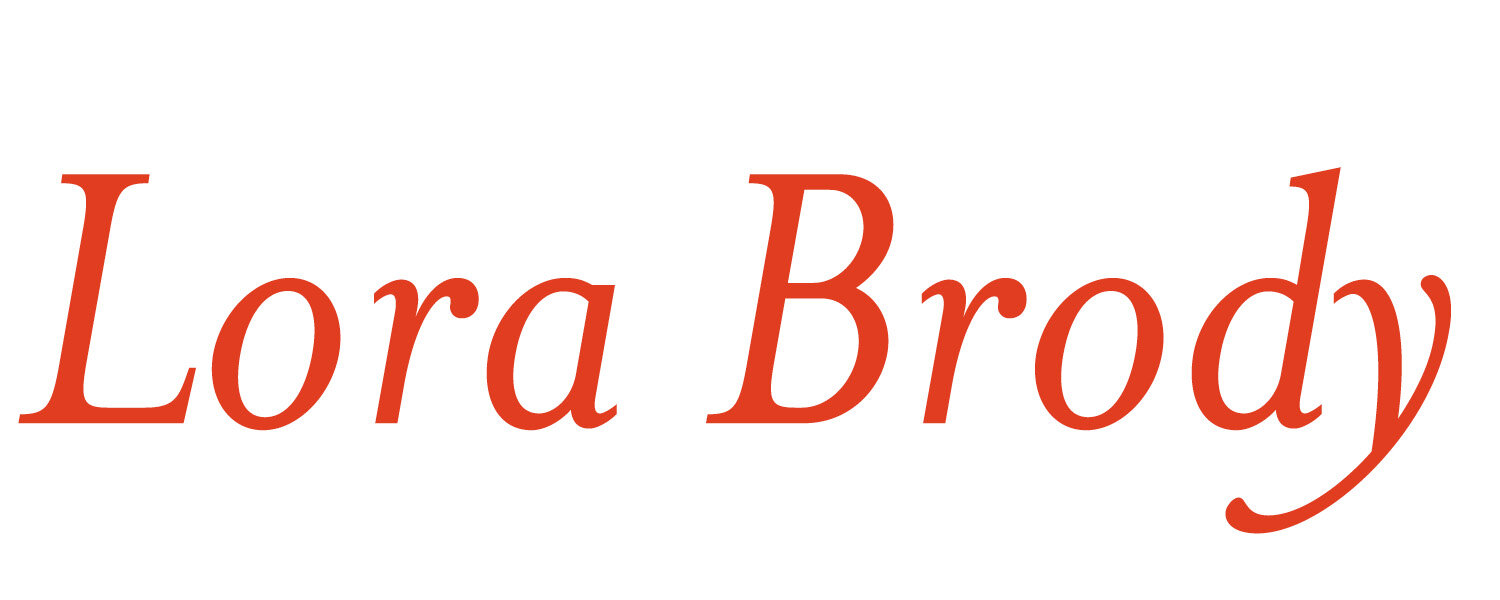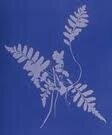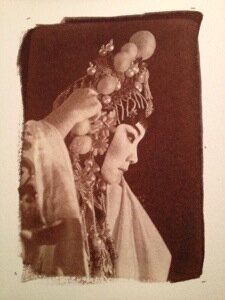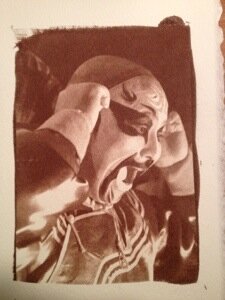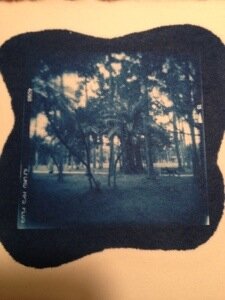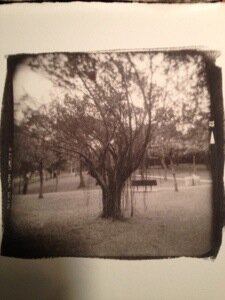Learning from the master of alternative processing
When I realized I would be in Taipei for almost three weeks, I knew that I'd better find something to do other than be a full time grandma (which is somewhat of a challenge since Ben and Julia spend all day in school - Ben goes on Saturdays as well). I wanted to be independent and not rely on Jonathan to entertain me, although he and Li have been indulgently attentive since the moment I arrived.Some of you may know that my interest in photography has extended to alternative processes that predate the invention of cameras. It involves coating paper with a light sensitive solution, placing an object on top of the coated paper, and exposing it all to sunlight. The blue fern image posted below is an example of an early cyanotype I copied from the Internet.Six months before the start of the trip I googled 'alternative processing' in Taipei, hoping at best to find a course to take, and with luck, maybe a studio where I could develop prints. A reply came several months later from a website called PorQue Base, offering to let me use their studio for processing. They had looked at my website and asked if I would be interested in teaching a food styling and photography class in exchange for access to their darkroom. How could I say no to that?Here is a case of my toast landing jelly side up. The PorQue Base website is actually a lovely Korean man, Syko Song, who turns out to be a well-known and highly regarded master of alternative process printing. I had the amazing good fortune of spending many days with him. He is an endlessly patient, incredibly knowledgeable and exceptionally generous gentleman who cares passionately about alternative processing photography. He mixes his own solutions and has created color possibilities I had never seen before. He is meticulously scientific about processing and records every aspect of the printing, even the level of humidity in the dark room.Syko helped me work with two different sets of images. The first was a collection of my Chinese opera digital images that he helped me convert to film. The other was a set of black and white 120 film images I had taken with my Holga, an inexpensive plastic camera that makes a distinctive images as a result of its cheap plastic lens and light leaks in its plastic body. We used film negatives from both sets of images to make cyanotypes and two additional alternative processes: Van Dyke brown and palladium prints. Sample results below.I am thrilled with the work I did with Syko and enormously grateful for the chance to learn from him. If you ever want to learn from a master, I urge you to go to Taipei and seek him out.
